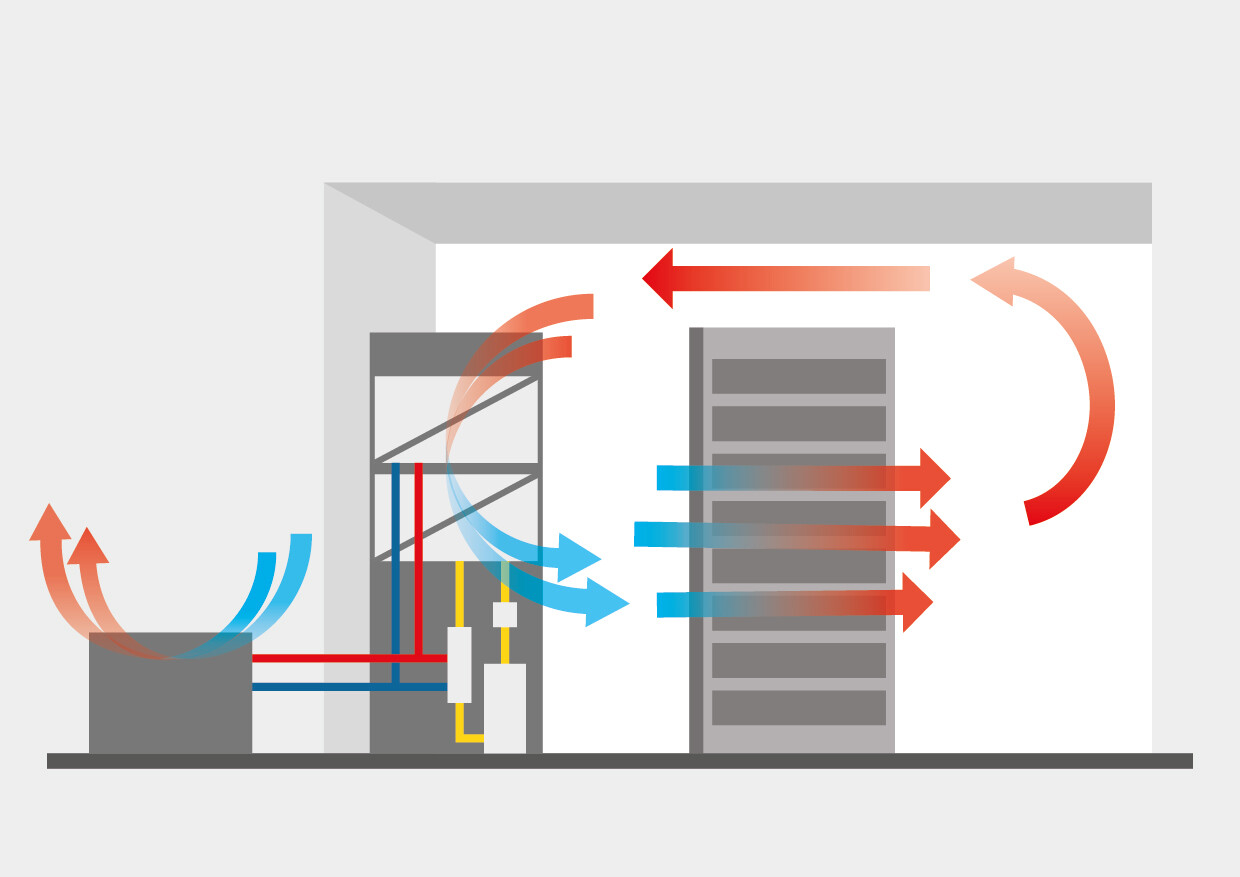Free Cooling for Data Centers: this subject is on everyone's lips and is preoccupying specialists at conferences on Data Center infrastructure. There are now countless variations. But they all pursue the goal of lowering the Data Center's energy consumption and improving the PUE.
The term "Free Cooling" suggests that you don't have to pay for this type of cooling. That is a fallacy. Is anything free these days? Below I will describe the Free Cooling solutions in use today.
Free Cooling
Free Cooling means that the power consumption of the air conditioning system at the site is reduced to the necessary minimum by suitable means, without compromising on reliability and availability. The words "suitable means" and "at the site" open up a very broad range of possibilities.
Direct Free Cooling
To put it briefly, this could be described as follows: window open, blow cold air from outside through the Data Center, pick up the warm air, transport it back outside, voilà! And physically speaking, that's exactly what happens. Only the process of "moving the air" requires energy.
Unfortunately, in real life things are not that simple. Outdoor air is not always in a condition that the IT equipment is comfortable with. Sometimes it's hot and sometimes cold, sometimes it’s very humid and sometimes very dry. What's more, outdoor air is not always clean. The outdoor air is often full of particles which can be very hostile to modern IT equipment.




